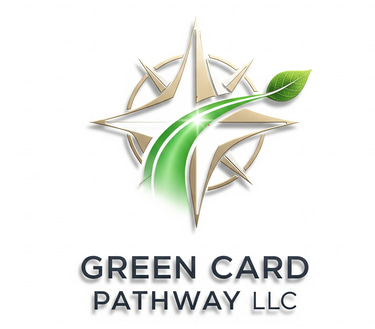EB-1A vs. EB-2 NIW: Which Self-Petition Path Fits Your Profile?
EB-1A and EB-2 NIW both let you self-petition for a U.S. green card—but their requirements, timelines, and benefits differ. Discover which path is right for your achievements and goals.
Green Card Pathway
5/30/20253 min read


Choosing between an EB-1A (Extraordinary Ability) petition and an EB-2 National Interest Waiver (NIW) is one of the most important strategic decisions for accomplished professionals seeking U.S. permanent residency. Both categories allow you to self-petition—no employer sponsorship required—but they target different standards of achievement and national importance. In this deep-dive, we’ll compare eligibility criteria, evidence requirements, processing times, costs, and ideal candidate profiles to help you decide which pathway aligns best with your background and ambitions.
1. Overview: EB-1A vs. EB-2 NIW
FeatureEB-1AEB-2 NIWEligibility Standard“Sustained national or international acclaim”—top 1% of your fieldAdvanced degree or exceptional ability + work of national importanceEvidence StyleRigid: 3 of 10 specific criteria (or major award)Flexible: Three-prong NIW test (merit, positioning, U.S. benefit)Labor CertificationWaivedWaivedEmployer SponsorNot requiredNot requiredPremium ProcessingAvailable ($2,500)Not currently availableTypical Processing Time6–9 months (regular); 15 days (premium)6–12 monthsIdeal CandidatesAward winners, high-profile researchers, elite executivesInnovators, public-interest professionals, advanced-degree holders
2. Eligibility Breakdown
2.1 EB-1A: Extraordinary Ability
Who Qualifies:
Individuals with “sustained national or international acclaim” in sciences, arts, education, business, or athletics.
You need either a one-time major award (e.g., Nobel Prize) or meet three of the ten USCIS criteria:
Awards for excellence
Memberships in selective associations
Published material about you
Judging others’ work
Original contributions of major significance
Authorship of scholarly articles
Artistic exhibitions/showcases
Leading or critical role in distinguished organizations
High salary/remuneration evidence
Commercial success in performing arts
Strengths:
High prestige category
Premium processing speeds approval
No PERM or job offer required
Challenges:
Strict criteria with narrow interpretations
Requires strong documentation in at least three areas
Adjudicators’ standards can be unpredictable
2.2 EB-2 NIW: National Interest Waiver
Who Qualifies:
Professionals with an advanced degree (Master’s, PhD) or exceptional ability in arts, sciences, or business.
Must satisfy the three-prong NIW test (Matter of Dhanasar):
Substantial Merit & National Importance: Your proposed endeavor benefits the U.S. (e.g., health, environment, education).
Well-Positioned to Advance: You have the credentials, track record, and resources to succeed.
Balance of Factors: Waiving the labor certification is in the U.S. interest (your contributions outweigh the need for PERM).
Strengths:
Broader evidence options (focus on future benefit, not only past acclaim)
No strict list of criteria—more narrative flexibility
Often easier for researchers and public-interest professionals
Challenges:
No premium processing—longer waits
Requires a strong proposed-endeavor statement
Demonstrating “national importance” can be subjective
3. Evidence Comparison
Evidence TypeEB-1AEB-2 NIWAwards & HonorsEssential for 1+ criteriaHelpful but not requiredPublications & CitationsScholarly articles support one criterionDemonstrate expertise & project planMedia Coverage“Published about you” criterionImproves narrative of importanceRecommendation Letters6–8 letters addressing specific criteria6–8 letters focusing on NIW testProposed Endeavor PaperNot requiredCritical to outline future impactOriginal ContributionsPatent grants, innovationsDemonstrate how contributions serve national interest
Tip: Many clients pursue both paths simultaneously—filing EB-1A for prestige and EB-2 NIW as a backup.
4. Processing Times & Costs
CategoryUSCIS FeePremium ProcessingProcessing TimeEB-1A I-140$715$2,5006–9 months (15 days with premium)EB-2 NIW I-140$715Not available6–12 monthsI-485 Filing$1,140N/A8–14 months
Cost Comparison:
EB-1A Total (consulting + attorney + USCIS + premium): ~$30,000–$35,000
EB-2 NIW Total (consulting + attorney + USCIS): ~$25,000–$30,000
5. Timeline & Career Impact
EB-1A: Faster green card issuance if premium processed; immediate work-authorization continuation for H-1B holders.
EB-2 NIW: Longer approval window but ideal for those still building national-impact projects.
Career Benefits:
Both categories remove H-1B visa caps, allow spouse work authorization (H-4 EAD or derivative green card), and bring long-term stability.
EB-1A can strengthen your professional brand; NIW underscores your public-interest contributions.
6. Ideal Candidate Profiles
Profile TypeBest PathWhySenior ResearcherEB-1A + NIWCombine prestige with national-interest narrativeHealth Policy ExpertNIWClear public-benefit projectSerial EntrepreneurEB-1ACommercial success & innovationArtist/PerformerEB-1AExhibitions, media coverageEnvironmental ScientistNIWEnvironment = national importance
7. Making the Decision
Self-Assess: Use our EB-1A Eligibility Quiz and NIW Readiness Checklist.
Consult Strategically: A 60-minute deep-dive consult can clarify which path fits your strengths.
Plan Concurrent Filings: If feasible, file both I-140s to maximize chances.
Prepare for RFEs: Strengthen both petitions with targeted evidence to minimize delays.
Conclusion
Both EB-1A and EB-2 NIW offer powerful routes to self-petition for a U.S. green card. Your choice hinges on your past accomplishments, future project plans, and how quickly you need residency. By understanding the nuanced requirements, costs, and timelines, you can chart a clear, data-driven strategy that aligns with your career goals. Ready to decide? Book a strategy call now and let us tailor the optimal petition path for you.
